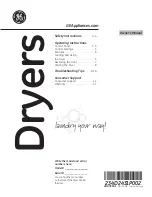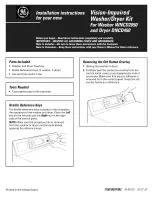
ENGLISH
ENGLISH
GB-29
GB-28
that water cannot collect in the container or a
deep base.
• Dishes and items of cutlery must not lie inside
one another, or cover each other.
• To avoid damage to glasses, they must not
touch.
• Load large items which are most difficult to
clean into the lower basket.
• The upper basket is designed to hold more
delicate and lighter dishware such as glasses,
coffee and tea cups
• Long bladed knives stored in an upright
position are a potential hazard!
• Long and/or sharp items of cutlery such as
carving knives must be positioned horizontally
in the upper basket.
• Please do not overload your dishwasher. This is
important for good results and for reasonable
consumption of energy.
Removing the Dishes
To prevent water dripping from the upper basket
into the lower basket, we recommend that you
empty the lower basket first and then the upper
basket.
The Method Loading Normal Dishware
Loading the Upper Basket Loading the Lower Basket
The upper basket is desig-
ned to hold more delicate
and lighter dishware such
as glasses, coffee and tea
cups and saucers, as well as
plates, small bowls and shal-
low pans (as long as they are
not too dirty). Position the
dishes and cookware so that
they will not get moved by
the spray of water.
We suggest that you place
large items and the most
difficult to clean items are
to be placed into the lower
basket: such as pots, pans,
lids, serving dishes and
bowls, as shown in the
figure below. It is preferable
to place serving dishes and
lids on the side of the racks
in order to avoid blocking
the rotation of the top spray
arm.
IN
IN
Please be reminded that:
• Pots, serving bowls, etc, must always be placed
top down.
• Deep pots should be slanted to allow water to
flow out.
• The Bottom Basket features folding spikes
so that larger or more pots and pans can be
loaded.
















































